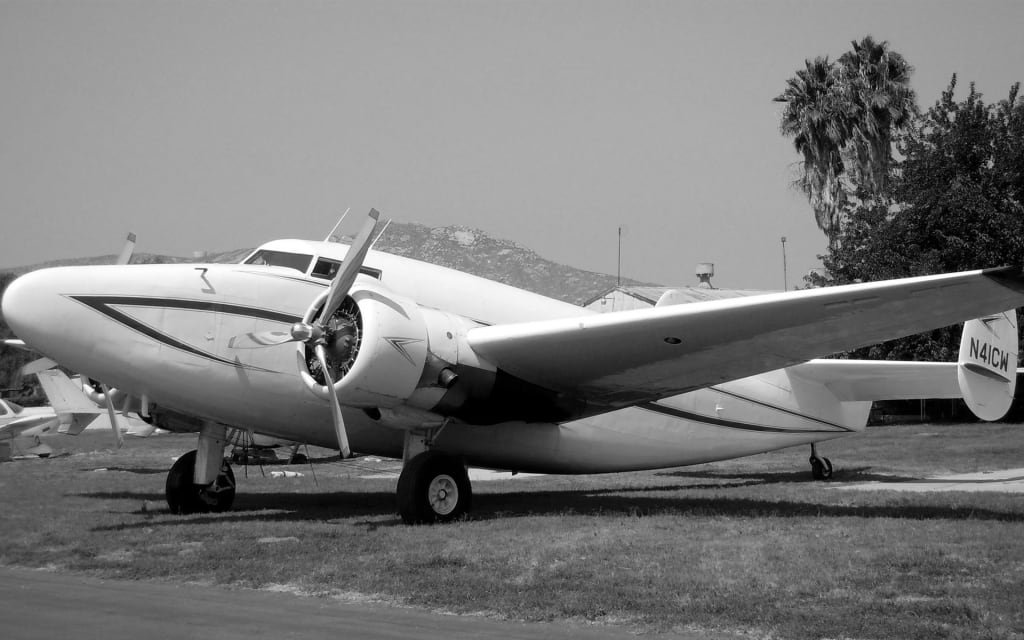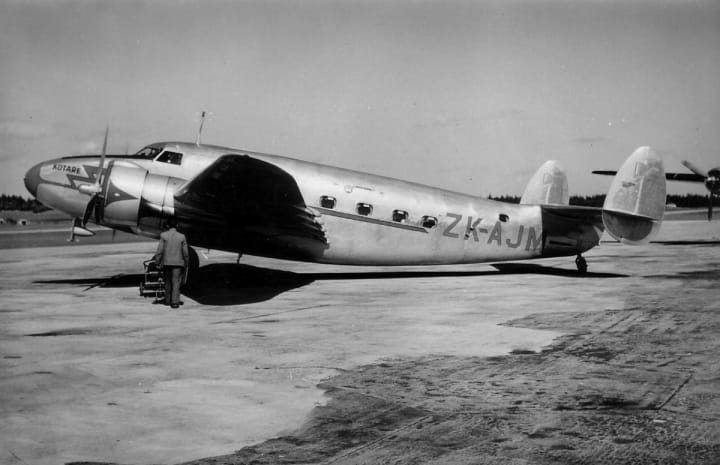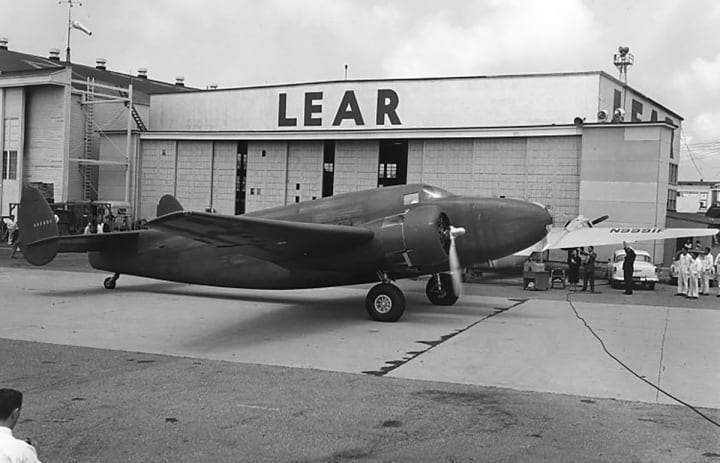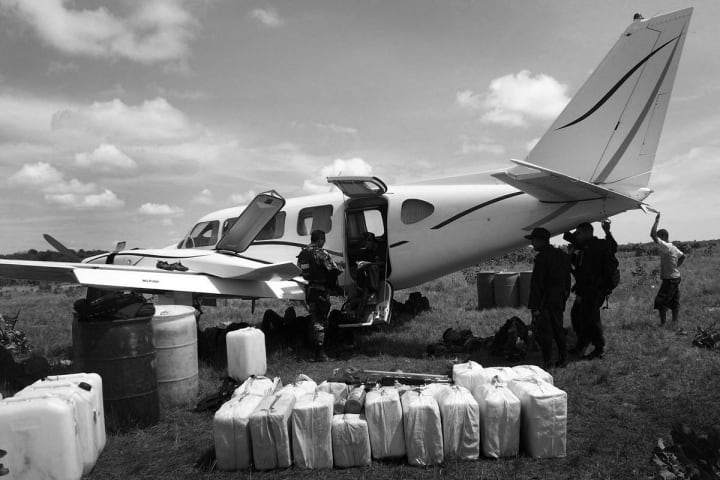Famous Marijuana Smuggling Plane
Lockheed Lodestar, a famous marijuana smuggling plane, was utilized because of its size and speed for quick delivery and pick up.

A memorable flight in a Lockheed Lodestar was a 2,000" takeoff run at a bush airport. The stats from Lockheed said this bird could clear a 50" obstacle at the end of a runway after rolling only 1,870". But that’s with a pilot, copilot, stewardess, and 14 passengers. Not to mention the weight added from marijuana smuggling. This version was different though: no seats, no gallery, no john, no door—stripped naked. Twenty-three of us skydivers huddled in the back. A clump of trees sat at the end of the runway that nobody was sure this 1940s relic could clear. The pilot revved up the twin Pratt and Whitney engines, 12,000 horse-power each. He lined up the three-ton princess on the runway and completed his checklist.
The pilot eased the throttles forward, released the brakes, and the plane waddled ahead. Facing the rear, we parachutists could see the foliage racing by the open door. As the plane’s tail lifted slowly in the air, the world went by in a hurry, like a camera panning too fast. Then the ship was airborne, banking sharply at tree-top level. We could now take our crash helmets off until jump run. The apprehension lessened. Hell, only the pilot had to worry about getting the thing down intact.
You must remember this: In the last scene of the 1942 movie, Casablanca, Humphrey Bogart stares tenderly at Ingrid Bergman and tells her she better be getting on that plane. Aviation nuts and trivia freaks know that she and Laszlo fade into the foggy mist with a Lockheed Lodestar waiting impatiently on the apron.
The Tales of the Legendary Lockheed Lodestar

Photo via Wikipedia
The twin-tailed Lodestar—known also as the Model 18—was one of Lockheed's journeyman planes, carrying cargo, including marijuana, or people across the nation at 251 mph. Not exactly the Concorde, but pretty damn fast for World War II.
Meanwhile, the plane had gained a new, cult-like popularity. One pilot said the Lodestar was also a specialty ship, good for only two jobs: marijuana smuggling from Colombia, or whisking a couple dozen skydivers up to 15,000 feet for a free-fall orgy.
The Lodestar had enviable specifications for an airplane of its size and age, which allowed it to accomplish either task, marijuana smuggling or sky diving, with ease. First, it could take off and land on a relatively short runway (or on dirt fields). With a light payload and a good pilot, she could get airborne in as little as 985 feet, and would touch down and roll to a stop in less than 600 yards. Smugglers didn’t often fly in or out of airports—especially ones with long runways—so the short field capability was an attractive one.
The plane also had a 1,740" per minute rate of climb, which is especially good for parachuting. Before big planes were used in skydiving, four or five jumpers would be crammed like sardines into a small Cessna or other single-engine plane for a 45-minute ride before being able to make a long free fall. The Lodestar could have made 15,000 in 12 minutes. And—aside from the unnerving take off—the ride is roomy and comfortable.
Of course, the Lodestar was used by lots of pilots other those involved in marijuana smuggling or skydiving. The stripped-down version was a popular cargo plane, which had proven to be economical on short runs.
The Creation of Learjet

Photo via Adastron
In its prime, nobody knew for sure just how many Lodestars were actually flying around. A spokesman for Lockheed said, “Our records are very, very sketchy on this airplane.” The thriftiness of the Lodestar had attracted the attention of two disparate aficionados of the skies: Bill Lear and Kenny Burnstine. The former was a capitalist of the airplane industry, the latter a maven of the marijuana smuggling industry.
Shortly after World War II, Bill Lear bought a fleet of Lodestars. Lear tinkered with their noses and streamlined the fuselages. He added ferrings to the landing gear and beefed up the horsepower. The result was a modified plane he called the Learstar. Lear’s new plane was one of the first truly executive aircraft, and Lear guaranteed a 300 mph cruise speed for businessmen who were in a hurry. Today, Lear’s business jets dot the aprons of runways all over the world. Obviously, the man had a certain amount of prescience.
Smuggles and Troubles

Photo via Business Insider
Burnstine eschewed law and order for a career of arms dealing and marijuana smuggling. One of the most famous pilots in smuggling history, Burnstine used a fleet of Lodestars in his operation. One of his Lockheeds cracked up and lost 4,000 pounds of marijuana on a Florida beach. Nobody is sure whether the pilot overloaded the plane, or if he crashed trying to use circus maneuvers in eluding drug enforcement agents. (The Lodestar was not known for its hammerhead stalls, loops, or other stunts. No matter what you did, it wouldn’t fly like P-51 Mustang).
A less celebrated marijuana smuggler was a Florida man named Errol J. Mirmelli. Mirmelli bought a Lodestar with $57,000 cash. Obviously, he expected a quick return on his investment. He loaded up the plane with 1,800 pounds of marijuana and flew northbound, apparently to his connection in New Jersey. He landed at Teterboro Airport on March 22, 1976, only to be met by US Customs agents who had been tipped off about the shipment. Having served five years in the can, Mirmelli probably wished he was still in Miami working as a travel agent. Once a local ganja express, the “Ramp Queen” was known by airport people to sit idly on the apron until the feds decided what to do with it.
All the notoriety given to the Lodestar had probably done nothing to help smugglers who wanted to move a lot of weed very quickly. Obviously, drug agents knew the plane was widely used for marijuana smugging, so any Lodestar was a conspicuous one. Chances were Customs agents would have checked Mirmelli’s cargo even if they hadn’t been tipped off. An airport spokesman said Lodestars were rare at busy executive and cargo terminals like Teterboro.
Parachutists, however, would still happily bail out of the relics on weekends. As one jumper said, “It’s a bitchin’ plane. Wide door for fast exits. Gets up there fast. Fly in one all day, as long as I don’t have to land in it.”
About the Creator
Aunt Mary
Lives in Englewood, NJ, and can often be found sharing her weed wisdom at Starbucks.
Enjoyed the story? Support the Creator.
Subscribe for free to receive all their stories in your feed. You could also pledge your support or give them a one-off tip, letting them know you appreciate their work.






Comments
There are no comments for this story
Be the first to respond and start the conversation.